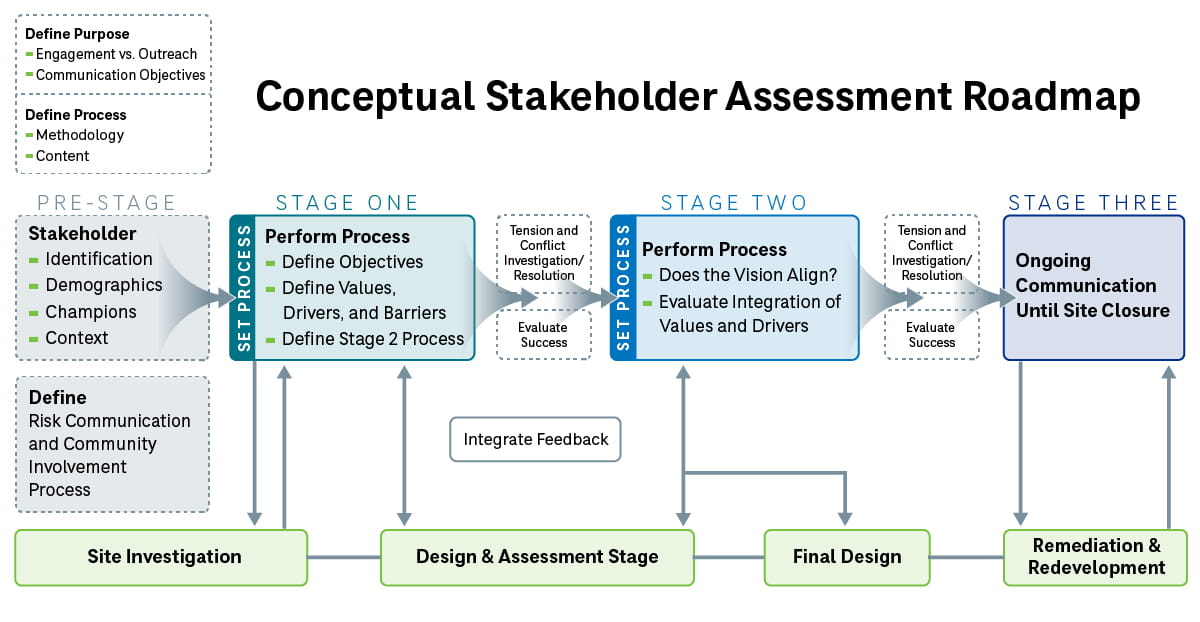Assessing PFAS Risk: Talking to Stakeholders
Our understanding of the “forever chemicals” collectively referred to as PFAS has greatly increased, but the scientific community is still actively investigating the mechanisms behind fate and transport, determining the levels of toxicity, and categorizing thousands of compounds under the PFAS umbrella.
Now, the latest Health Advisory Levels announced by EPA have increased the need for effective risk communication around PFAS. Health advisories for the two most notorious analytes, PFOA and PFOS, have been lowered below what can currently be detected, and two commonly used substitutes for those compounds, GenX and PFBS, now have advisories of their own. The public now has two major takeaways: PFAS is everywhere, and a very miniscule amount seems to be tied to adverse health effects. As a result, it's more critical than ever for water providers to engage in effective risk communication.
What makes for effective risk communication?
An effective risk communication and outreach strategy can prevent PFAS from becoming a contentious issue among public stakeholders and local communities. An approach that combines active public outreach and stakeholder engagement with platforms for two-way information exchange can allow water providers to assess the wide range of needs and concerns that must be considered going forward. Addressing those needs and concerns head-on will help facilitate stakeholder acceptance and participation.
Using a risk-based approach often helps manage pollutant impacts using less time and money with a minimized environmental footprint than conventional approaches with an “all-or-nothing” mentality.
A risk-based decision framework identifies if cleanup site or utility facility characteristics support sustainable risk management to inform project life cycle activities. It includes performance metrics and tools to evaluate and implement successful risk-based management approaches in alignment with multi-stakeholder values. In addition, the framework addresses uncertainty and risk perception challenges by aligning these approaches with the concepts of risk communication and sustainable remediation. For more details on this framework, reference the ITRC PFAS Technical Guidance.

Heighten Understanding
Project teams often recoil at the thought of presenting topics like contamination and potential health effects at town halls. They’re concerned that the public will raise an issue they can’t address or will have to expand their scope.
Even in cases with no clear solution or end in sight, informing stakeholders of the health and environmental risks as soon as possible can increase their sense of agency and build trust. It’s also a good time to inform them of the work being done to mitigate, if not solve, the problem.
Don't hesitate to reach out to other local institutions, like universities. Academic institutions make great partners and can help gain access to important stakeholders. For an example, take a look at Bennington College, where faculty and other experts have built a course for water purveyors, public works employees, and public health professionals called "Understanding PFOA."
Sharpen Perception
There are a lot of different factors that go into how someone perceives their risk to a particular hazard. Some people may shrug off the risk, while the fear of the unknown may heighten perceived risk in others. Surveys are useful tools to assess this dimension. You can measure risk perception along a continuum ranging from attenuation, when experts judge a hazard as serious but the public does not, to amplification, whereby an individual's heightened sense of risk due to factors like physical traits, demographics, sense of trustworthiness with authorities, and an internal sense of agency leads to a greater perception of risk than experts might assess.
For example, our team discovered common perception factors that affected participation in the mitigation of lead-based paint within residential structures, using data obtained from about 250 survey respondents in Newark, N.J. Their findings included factors that may influence public perception of various forms of risk. CDM Smith's team published their findings in the Journal of Environmental Management, where they also introduced the "Early Decision Framework" that leads project managers toward a risk-based remediation approach, when appropriate.
Encourage Participation
Preliminary steps to building a public outreach plan may include:
- Establishment of community-specific engagement goals
- Community assessment of demographics and stakeholder values
- Notifications to the affected population
- Coordination with relevant community groups
- Development of outreach materials
- Press release and briefing
- Community meeting rehearsal
A complete public outreach plan also includes a strategy for reaching underrepresented populations like non-native speakers and low-income families, as well as sensitive populations like children and the elderly. Plan carefully and listen to the public’s concerns. Understand demographic and socio-cultural factors and speak clearly, compassionately, and in nontechnical terms.
By constructing and following a public outreach plan that considers risk communication, you can shrink the distance between you and your stakeholders. Engaging with stakeholders shouldn't feel like a burden—think of it as adding another insightful member to your project team.

I’m inspired by people who seek and implement feasible, realistic steps that work towards solving our largest challenges.








